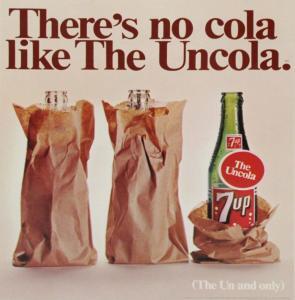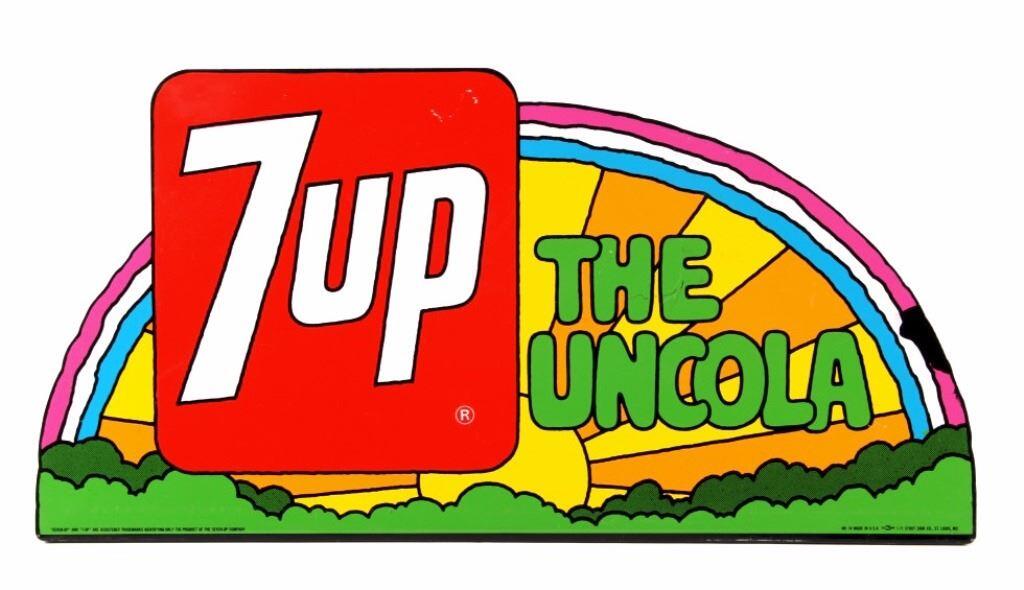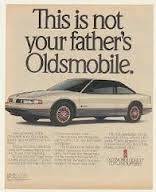![]() In the 1970’s Al Ries and Jack Trout popularized the concept of positioning strategy. Since then, they’ve written dozens of spin-off books, including Focus, The Immutable Laws of Marketing, Bottom Up Marketing, and even Re-Positioning.
In the 1970’s Al Ries and Jack Trout popularized the concept of positioning strategy. Since then, they’ve written dozens of spin-off books, including Focus, The Immutable Laws of Marketing, Bottom Up Marketing, and even Re-Positioning.
 Still, you could have a roomful of MBA’s and no two would agree on what positioning really means. Many people can’t even decide if the word is an active verb or a proper noun.
Still, you could have a roomful of MBA’s and no two would agree on what positioning really means. Many people can’t even decide if the word is an active verb or a proper noun.
You devise a positioning strategy in hopes of affecting your position in the market. Positioning is the essence of marketing strategy.
Most people think of positioning as a simple step ladder. The cheapest, lowest-end products are “positioned” at the bottom of the ladder, and the best, most expensive products are on the top shelf, if you will.
But positioning has little to do with real price or quality. Instead, it’s all about perception.
The whole concept of positioning is based on the simple fact that we form opinions about products and companies based on our own perception. These opinions are influenced by all sorts of things… word of mouth, personal experience, individual prejudices, blogs, the marketing efforts of the brand in question and a hundred other factors.
In our own minds we make some pretty broad — and often rash — assumptions about things. Call it consumer bigotry if you want to. The fact is, we pigeon hole companies and products the same way we pigeon hole political candidates.
As marketers, our goal is to tap into these existing perceptions and use them to our advantage.
Here’s a classic example. Back in 1968, before the term positioning was ever invented, the makers of 7-Up scored a huge coup in the soft drink market.
Taste tests and other forms of consumer research revealed that people saw 7-Up as a refreshing alternative to colas. Respondents said it flat out… “it’s a nice change from all the cola I’ve been drinking.”
So the 7-Up executives decided to market the drink as the alternative to cola. It was a no-brainer, really. They simply took the existing perception in the marketplace and turned it into their strategy.
Like all good positioning strategies, 7Up’s was simple and almost painfully obvious. Once the executives at 7-Up knew what consumers were thinking, there was no other way to go.
 The creative execution of the strategy, however, was not so obvious.
The creative execution of the strategy, however, was not so obvious.
J. Walter Thompson’s simple two-word slogan “The UnCola” said it all. Brilliant! The campaign gave the product a personality, cemented the idea in our collective consciousness, and assured 7Up a place in advertising history.
From a positioning standpoint this strategy worked remarkably well for several reasons. First, it didn’t attempt to change anyone’s perception. It simply leveraged the existing public opinion.
Secondly, it effectively repositioned the competition. Without slamming them, 7-Up lumped Coke, Pepsi and RC all together in a single boring category of colas. Colas represented The Man!
 Finally, The Uncola tapped into the collective consciousness of the times. The new positioning made 7Up relevant to the young people who account for a large portion of soft drink sales.
Finally, The Uncola tapped into the collective consciousness of the times. The new positioning made 7Up relevant to the young people who account for a large portion of soft drink sales.
The campaign tapped into the prevalent anti-establishment mind set of the late 60’s. It actively encouraged defiance against the cola establishment and portrayed 7-Up as a symbol of dissent. The entire campaign summarized the popular values of the public and catapulted 7-Up into the position as the third leading soft drink in America.
While it is possible to build a positioning strategy around images alone, it’s usually a few simple words like “The Uncola” that solidify things in the consumer’s mind. Because you don’t “position” a product, you communicate its position.
“Just Do It” communicates Nike’s position as a brand of everyday athletes. “Pizza Pizza” is a fun way to communicate Little Ceasar’s low-price strategy. “Avis, we try harder” communicated the benefit of being number two in the rental car business.
On the other hand, many automobile companies have struggled with their positioning strategy. Oldsmobile, the now defunct GM brand, is a good example.
 In its last 14 years, Oldsmobile floated no fewer than ten different slogans. Here’s a few of the real gems:
In its last 14 years, Oldsmobile floated no fewer than ten different slogans. Here’s a few of the real gems:
“Olds Quality. Feel it.”
“Demand Better.”
“Look what happens when you demand better.”
“Defy Convention.”
“It knows the road.”
Ironically, the slogan that’s most memorable is the only one that even hints at the reality of Oldsmobile’s perception with American car buyers. “This is not your father’s Olds” used the old, fuddy-duddy perception of Oldsmobile and spun it in a positive way. Maybe if they’d have stuck with it for more than a year, the brand would still be alive today.
You wonder what kind of market research Cadillac executives did that led them to believe they could compete with Honda and Toyota in the small car market. The Cimmaron failed miserably back in the 80’s. Then they tried again in the 90’s with Caterra, “The Caddi that zigs.” Nobody believed that! The idea of positioning a Cadillac that way just doesn’t make sense.
 GM finally got the product right with the CTS, but it’s still a classic case of force-feeding a product into a position in the market. It can compete with Mercedes and Audi, but it’ll never be in positioned as a sports car along side of BMW. It just does not compute with the American public. It goes against everything Cadillac has ever stood for. The world’s biggest, most luxurious SUV is one thing, but we’ll never buy the concept of a small, sporty Cadillac. And branding purists would say they shouldn’t even try.
GM finally got the product right with the CTS, but it’s still a classic case of force-feeding a product into a position in the market. It can compete with Mercedes and Audi, but it’ll never be in positioned as a sports car along side of BMW. It just does not compute with the American public. It goes against everything Cadillac has ever stood for. The world’s biggest, most luxurious SUV is one thing, but we’ll never buy the concept of a small, sporty Cadillac. And branding purists would say they shouldn’t even try.
In the same vein, Porsche is off track trying to compete in the SUV market. “The Porsche of SUV’s” has a nice ring to it, but it will never really resonate with the public that sees Porsche as a rich-man’s sports car. What’s next, Chateaubriand at McDonald’s?
There’s an important distinction to be made here between niche marketing and positioning.
Cadillac can decide to focus on the luxury sports car niche and can build a car specifically for that purpose. But that does not mean the product will ever be perceived that way in the minds of the consumer. The problem is, Audi and BMW already occupy that space in the consumer’s mind.

Here’s another trap that many companies fall into: They mistake their mission statement for a positioning strategy.
Fortune-500 companies miss the boat all the time on this. There’s a giant health care provider that recently formed an internal committee to study the “position” of the company and draft a “positioning strategy.” What they came up with was a mission statement at best.
But your mission — your statement of purpose — may have nothing to do with your position in the market place. And vice versa.
A mission statement is concocted by a committee and exists in corporate brochures, annual reports, and press releases. A positioning statement is formed in the consumer’s mind. A mission statement is the rose-colored view of your company. A positioning statement is the gritty, 16mm view.
No doubt, the semantics of positioning and positioning strategy can get confusing. But if you want to hedge your bets, think of it this way:
Positioning is everything you do as a company to help position the brand in the minds of consumers. You can choose a narrow market niche, devise a new pricing strategy and launch a giant ad campaign that, together, may affect people’s perception of you. It’s a positioning effort, but you can’t technically “position” anything.
Want to transform your business into an iconic brand like 7-Up? Call us. 541-815-0075. Want more classic positioning advice? Read this post.


I would agree that positioning is only fully consummated in the mind of a customer, real, potential, or otherwise. But companies/brands can and do try to influence their positioning through pricing, features, advertising campaigns etc.
In positioning your brand, it’s important to understand the landscape in which you are competing, the design of the experiences that communicate the brand, and the true and perceived value the brand delivers.
Simply assuming that if you position it, people will agree, does not (as you point out) work.
I like your chain of thought on this. It makes a lot of sense.
My customers ask me for ‘the latest promotional gift idea’, and sometimes, if they really don’t want to hear, I’ll simply show them whats new….
With others, I suggest its not about whats new, its more about :
Who
What
Where
How
And why
The uncola was brilliant positioning. Remember the upside down coke glass? I still have mine.
Mission Statements have everything to do with the illusion that companies are accomplishing something. They typically do this exercise with management consultants and have no plan or inclination to promote this mission beyond the lobby of their businesses.
There is no buy in from their stake holders and as such will be nothing more than whimsy.
A great read here today.
Ed
P.S. I answered my own question as to why my comments were posting under Compliance Branding (in another comment)
Positioning statement does not make any sense unless and until it delivers what it says. If consumers perception needs to be good, there must be commitment to coninuous improvement and excellence.”Uncola” is just an indicator of differentiation which is not done by coca cola so customers moved for a change and it became no.3 . One of the reasons for the failure of cadillac would be just because that people could not perceive it as a small brand.
This may be splitting hairs a bit, but your brand position is something that happens. But positioning doesn’t just happen—it is something you do to leverage what’s in people’s minds. As in putting a Marlboro in the mouth of a cowboy on a horse, when earlier it had been in the mouth of a girly-girl. And then spending millions of dollars on making it stick. I suppose what I’m referring to here is repositioning, but with the ‘ing’ at the end, aren’t we talking about a conscious decision that leads to creative action?
BTW, I totally agree with what you seem to be suggesting—which is that most great brand positioning efforts come as a result of consumer insight, rather than random acts of creativity. The creativity is most valuable in how that insight is dramatized and made operational.
Pingback: Case Study: 7‑Up’s “Uncola” Campaign — Disrupting the Cola